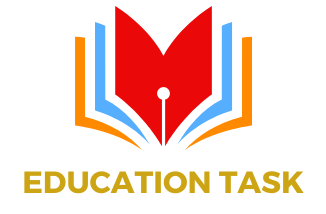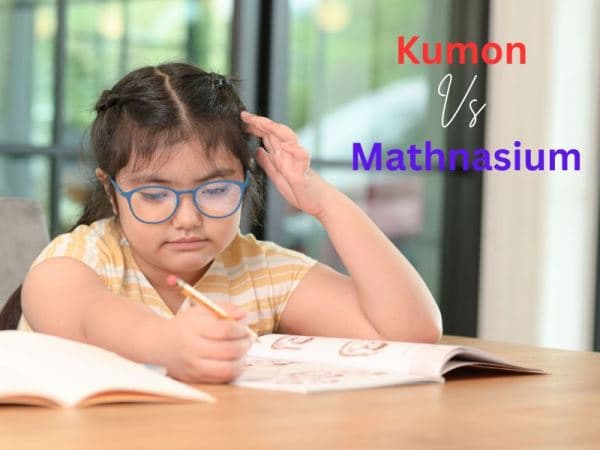It’s crucial to weigh all of your child’s preschool options carefully before picking the best. However, when we talk about the bests in the category, the philosophy-based teaching methods of Montessori and Reggio Emilia often break the conversation.
While both methods focus on the well-being of the children, they use different approaches. Although there are many shared principles between Montessori and Reggio, there are also significant differences.
In this article, we will compare and contrast the two and decide which one is superior. Moreover, we’ll highlight the points which will make it easier for you the decide among them!
Montessori School – History And Attributes
Maria Montessori, was the founder of Montessori, who founded the school in Italy. In Rome, where she established her first school, she advocated for the idea that kids can pick up useful skills just by being exposed to different situations.
She learned that kids could use inquiry to guide their own learning and become independent learners. Her first school was named after her, and it was named after the city where it was located. Her idea was later widely accepted across different preschools worldwide.
Curriculum
Montessori emphasizes one-on-one instruction above free play. Children have a more passive participation in their education and are taught a standard curriculum that mainly covers 5 areas:
- The Sensorial Area
- The Language Area
- The Practical Life Area
- The Math Area
- The Cultural Area
Independent Learning
In the classroom, students can freely select a wide range of engaging lessons. Children are given unfettered freedom and time to explore at their own pace. Due to the nature of the activity, parents may see that their children have their own spaces and are encouraged to navigate between them.
Classroom Layout
Montessori classrooms are beautifully and consistently set up, and teachers give each child a wide range of materials and spaces to meet his or her own needs. There are no workstations but tables and a sufficiently large floor.
Resources for Instruction
Tools used by children in Montessori classrooms are designed to help them repair their own mistakes. Thus, if a child tries and fails at a puzzle, they can try again and learn from their mistakes. You won’t be able to find anything like this outside of a Montessori classroom.
Related: Montessori Preschool Vs Traditional Preschool: Key Differences
Reggio Emilia School – History And Attributes
After the end of great World War II, the entire west was in a state of complete disarray. However, in 1945, a teacher known as Loris Malaguzzi began the adventure with neighbor parents in Reggio Emilia to build a new kind of childcare. She is credited with founding the Reggio Emilia approach.
To put it simply, it was desperately required because children the at the time were being born in war. At that time, their lives needed enhancement that could be provided by education. This is the reason for the establishment of the Reggio Emilia preschools.
Curriculum
With the right guidance, Reggio-inspired education allows kids to take charge of their learning. Therefore, students are not required to follow a prescribed curriculum and are instead encouraged to take an active role in their education.
Teachers, in this method, are viewed as collaborative adults who encourage students to develop their unique learning paths.
Independent Learning
Reggio Emilia’s lack of a comprehensive curriculum is one of its most glaring shortcomings. It encourages instructors to make plans ahead of time but be flexible in the classroom.
The lack of a set curriculum allows for this freedom of thought to flourish inside the philosophy. Since teamwork is emphasized in the classroom, students usually work on assignments and study together.
Classroom Layout
Because the environment is considered the third teacher in Reggio Emilia classrooms, classrooms play an important role in the development of the child. Classrooms are divided up according to project and group size.
Teachers pay great attention to features like textures and colors to pique a child’s interest as they encourage hands-on inquiry. The importance of documentation in the Reggio Emilia approach is such that it is prominently exhibited in the classroom.
Resources for Instruction
A Reggio Emilia classroom is designed to be an extension of the children’s world, and its complexity is intended to mirror the culture in which the children live and learn.
Montessori Vs Reggio (Which One Is Better?)
Now let us come to the main talk that we were waiting for. So what do you think after reading about all these features of the schools? Let us have a brief comparison.
| Attributes | Montessori | Reggio |
| Level of Education | The Montessori method applies not only to pre-k, kindergarten, and primary school but also to middle school. Many believe it may be utilized at the secondary school level. | The Reggio Emilia approach to teaching is primarily designed for use in early elementary school and preschool settings. |
| The Arts | Montessori schools don’t put as much emphasis on the arts. For example, they seldom ever set aside time for the arts or assign students art projects. | When compared to Montessori schools, Reggio Emilia schools place a greater emphasis on the arts. They advocate the use of a wide variety of artistic mediums and modes of expression and work to promote their cause. |
| Academics | Montessori schools typically place a greater emphasis on academics. For instance, they place a greater emphasis on labor than sports. | Like Montessori, Ressio schools also have a strong emphasis on academics beginning in preschool continuing through elementary school. |
| Technology | In the classroom, teachers at Montessori schools often make relatively limited use of various forms of contemporary technology. | Particularly in Reggio Emilia classrooms, teachers make extensive use of various technological tools to monitor and record student activities |
FAQs
Choosing a good school can be daunting. In this section, we will answer some of the most frequent queries people have regarding the two schools.
Is Montessori education the same as Reggio Emilia’s?
There are certain commonalities, yet the two are also very different. Reggio Emilia emphasizes an emergent curriculum, whereas the Montessori method emphasizes order and discipline.
How similar are the Montessori and Reggio Emilia approaches?
Children are encouraged to take initiative in their own education through the use of materials and methods common to both the Montessori and Reggio Emilia methodologies.
Both schools have excellent, nontraditional classroom settings that complement their pedagogical approaches.
Conclusion
As we all have concluded after reading this article then what do you think, which one can be a better choice for your child? In Montessori classrooms, students work independently toward subject-specific goals.
While in Reggio Emilia classrooms, teachers and students collaborate to develop a subject-specific curriculum based on the interests of the class as a whole. Well to speak frankly, I think that Montessori is a better choice because they put more emphasis on academics and quality of education while still focusing on a self-motivated learning approach.
More or less they both are the same but in Montessori, you are getting the additional advantage of primary school along with kindergarten.





